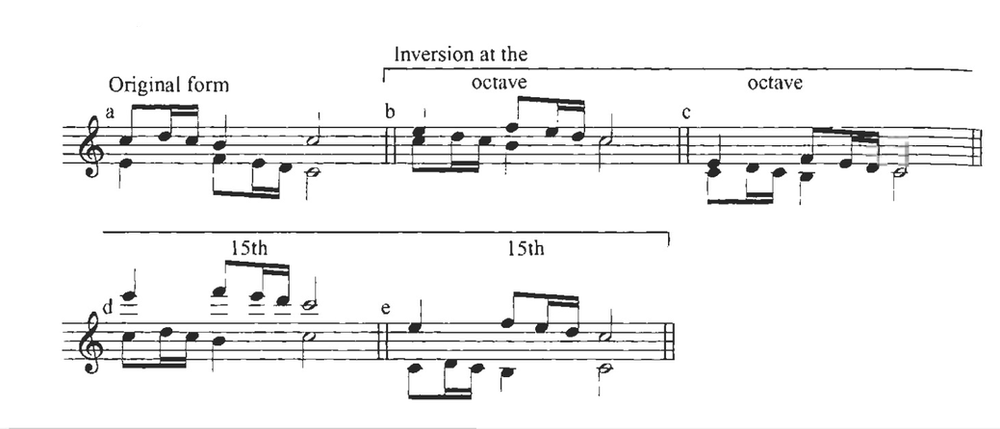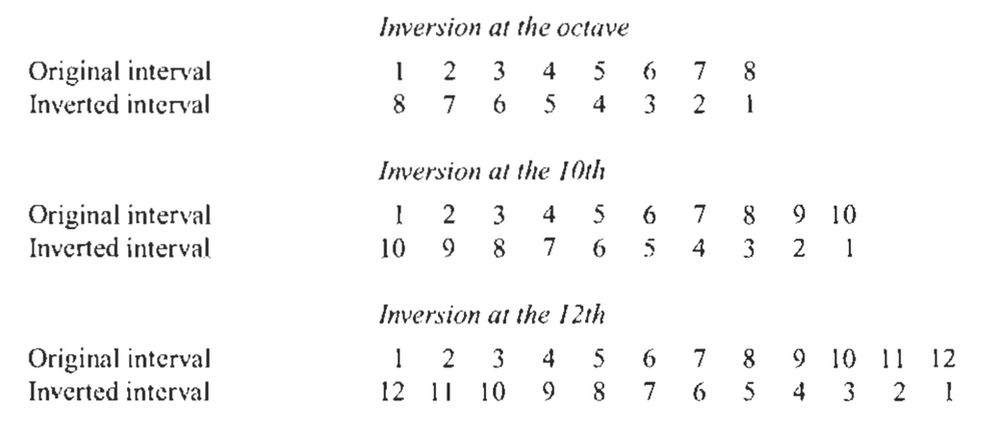Uncategorized
Invertible Counterpoint
Invertible Counterpoint
https://www.youtube.com/watch?v=MemwGobfuDs&list=PLCeZxJIYVmnEhx5X9BOGyLTGrzxImS6ge&index=29
DEFINITION
Invertible Counterpoint is a typical device that consists of interchanging the melodic lines’ order, moving the upper voice to be the lower voice and vice-versa. At the same time, the Cantus Firmus (CF) remains in its place without altering them. (intervallic and rhythmic-wise).
Voice 1——————————————– Voice 2
Voice 2——————————————Voice 1
Just a note of warning: this device should not be confused with the contrary motion technique.
Some theorists tried to replace the term (that in truth can be slightly confusing) with “interchangeable Counterpoint” but unfortunately never came into general usage, although it is certainly more straightforward.
INVERSION AT THE OCTAVE
This resource is by far the most common usage of the invertible Counterpoint.
If it is not specified, inversion by the octave is a given in this technique.
It implies that one of the voices is transposed up or down one or more octaves to become the upper voice instead of the lower, or vice versa. Below we can see a graph with the intervals through numerical values:
1 2 3 4 5 6 7 8
8 7 6 5 4 3 2 1

Example:

Kent Kennan – Counterpoint 4th Edition – p. 116
GUIDELINES
As we can see in the examples above, the two intervals we should be careful about are the 4ths and 5ths. Especially the perfect 5ths, as when they are inverted, they become perfect fourths, hence a dissonant interval. That is to say, if a perfect fifth is written on a strong metric position by skip when that voice is inverted, that perfect fifth will become a perfect fourth without the “proper” treatment for dissonances.
As a rule of thumb, treat the intervals of perfect 5ths as dissonances in the free Counterpoint, which will save many headaches.
This resource is most commonly used in 2-voice inventions, sinfonias (or 3-voice inventions), fugues and passages in fugato style.
Examples:
https://www.youtube.com/watch?v=t8b7InFj-YI
Bach: Invention 6 in E Major, BWV 777
https://www.youtube.com/watch?v=1ytvth9cXeo&t=27s
Bach: Invention 9 in F Minor, BWV 780
There are more types of inversions than the octave. We have inversion by the 10th and the 12th:

But they are quite rare and unused.
One famous example is the Fugue in C minor of J.SBach (book 1) of an inversion at the 12th:
https://www.youtube.com/watch?v=1GXHjxvSi24&feature=emb_logo
Bach: WTC1 No. 2 in c minor BWV 847
For practical purposes, we will focus on the most common, the inversion at the octave.
EXAMPLES WITH CF (Cantus Firmus)
These examples are taken from the book of counterpoint written by Eduardo Checchi “Contrapunto y Polifonia” Pages 116 and 117:


